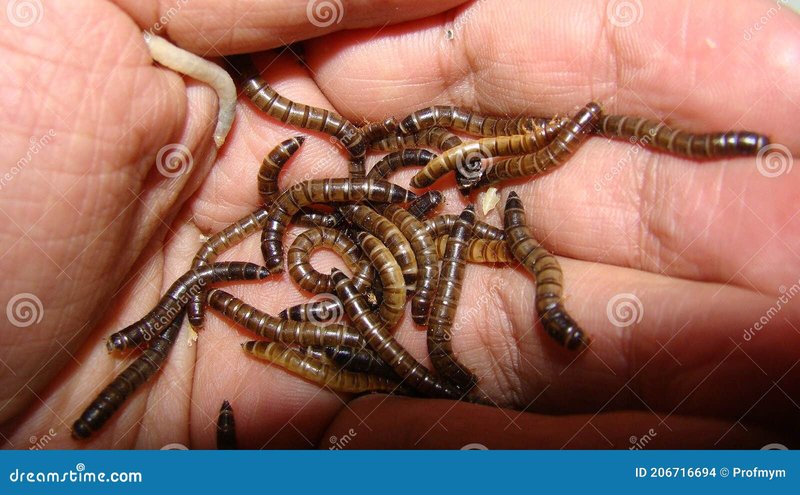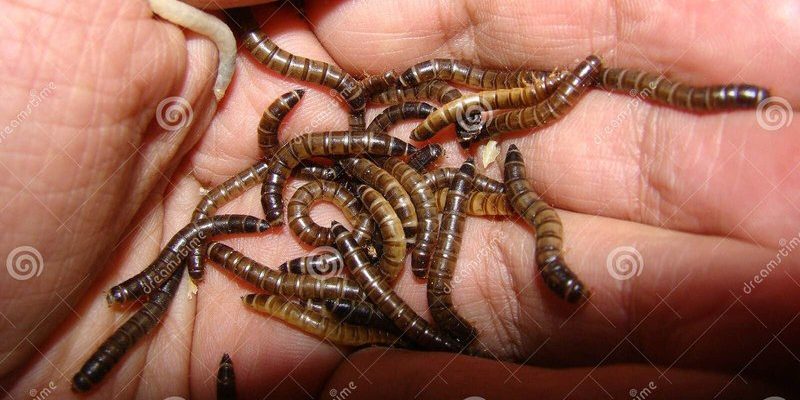
Imagine a bustling city where every inhabitant has a role to play. Just like how humans rely on each other for food, shelter, and community, mealworms depend on and interact with other microfauna—tiny creatures like bacteria, fungi, and other insects—to thrive. These interactions help break down organic matter, improve soil health, and even promote plant growth. So, let’s dive into the world of mealworms and explore how they fit into their ecosystems!
The Role of Mealworms in Ecosystems
Mealworms are commonly found in compost, soil, and decaying organic matter. Their primary role is as decomposers, which means they help break down dead plants and animal material. This process releases nutrients back into the soil, making them available for plants to use. Think of them as nature’s recyclers!
These little critters feast on a variety of organic materials, including decaying vegetables, fruits, and grains. This diet not only helps reduce waste but also supports a whole community of other microorganisms that are also feeding and decomposing. As mealworms munch away, they leave behind nutrient-rich frass, which is essentially their droppings. This frass is packed with nutrients that enrich the soil and help plants grow, creating a cycle of life that benefits everyone involved.
You might be wondering how they interact with other microfauna. The answer lies in their complex relationships with bacteria and fungi. Mealworms provide a food source for many beneficial microorganisms, while these microorganisms help break down the organic material further, enhancing nutrient availability. It’s a classic example of teamwork in nature!
Interaction with Microorganisms
When mealworms digest organic matter, they don’t just break it down into smaller pieces; they also interact with microorganisms that play a crucial role in this process. Bacteria and fungi thrive in the moist environments that mealworms create, especially in compost heaps. These microorganisms are essential for further decomposing organic matter, and they produce enzymes that mealworms can benefit from.
For instance, when bacteria like *Bacillus* or *Pseudomonas* are present, they can help decompose cellulose, a component of plant cell walls. This makes it easier for mealworms to access the nutrients they need. In return, mealworms contribute to the lifecycle of these microorganisms by providing a consistent food source. It’s a win-win situation!
Moreover, fungi, particularly those like *mycorrhizae*, form symbiotic relationships with plants, improving their nutrient uptake. When mealworms enrich the soil through their frass, they support a vibrant community of fungi, which can help plants grow more vigorously. This intertwined relationship among mealworms, bacteria, and fungi illustrates how interconnected life is in the ecosystem.
Influence on Soil Health
Soil health is vital for any ecosystem, and mealworms have a surprising influence on it. Their feeding habits create tunnels and burrows in the soil, which helps aerate it. Think of this as giving the soil a good stretch, allowing air and water to penetrate better. Healthy soil, filled with air pockets, can support stronger plant growth and better water retention.
Additionally, the nutrients found in mealworm frass are high in nitrogen, phosphorus, and potassium—all essential for plant development. When mealworms break down organic waste, they release these nutrients back into the soil. As a result, the soil becomes richer and more fertile, leading to better crop yields for farmers and healthier plants in your backyard.
Furthermore, mealworms contribute to the soil’s microbial diversity. The presence of diverse microorganisms is crucial because they can help protect plants from pests and diseases. This creates a more resilient ecosystem overall, where plants can thrive despite challenges.
Mealworms and Other Insects
Mealworms don’t live in isolation; they interact with other insects in their ecosystem as well. For example, they often share their habitat with ants, beetles, and even other larvae. While mealworms are decomposers, many of these insects play different roles, from scavengers to predators.
Ants are particularly interesting. They often farm mealworms, collecting them to feed their larvae. In this way, ants benefit from the mealworms by using them as a food source, while mealworms get protection from predators. This relationship helps ensure that both species thrive.
Interestingly, these interactions can also lead to competition for resources. If food is scarce, other insects might compete with mealworms for decaying organic matter. This balancing act keeps mealworm populations in check while allowing other insects to thrive. It’s another great example of how diverse and dynamic ecosystems are!
Impact on Biodiversity
Mealworms play their part in promoting biodiversity. By breaking down organic matter, they create environments conducive to a variety of other life forms. This includes not just microorganisms, but also plants, fungi, and other insects. Biodiversity is essential for the stability and resilience of ecosystems.
When mealworms thrive, they encourage more diverse microbial populations. This increased diversity can enhance the ecosystem’s ability to withstand changes, such as climate fluctuations or diseases. Think of it as a safety net—more species mean more ways to adapt and survive.
Moreover, mealworms can serve as a food source for other animals, from birds to small mammals. This further integrates them into the larger food web, allowing energy and nutrients to flow through various layers of the ecosystem. The presence of mealworms often indicates a healthy environment where many species can coexist and flourish.
Human Use of Mealworms
Humans have recognized the benefits of mealworms and their interactions with other microfauna for a long time. People often use them as a sustainable source of protein for animal feed or even human consumption! With a rising interest in sustainable food sources, mealworms are seen as an environmentally friendly option.
Additionally, they’re used in composting systems to help break down food waste. Farms and gardening enthusiasts often introduce mealworms to enhance compost quality. Their ability to convert biodegradable waste into nutrient-rich frass makes them invaluable in reducing landfill waste and improving soil health.
Moreover, mealworms are sometimes used in scientific studies to understand decomposition processes and ecosystem interactions better. Researchers can observe how they affect nutrient cycles and soil health, which is crucial for sustainable farming practices.
In conclusion, mealworms may be small, but they are mighty players in their ecosystems. Their interactions with other microfauna, like bacteria and fungi, create thriving environments that benefit plants and animals alike. They help recycle nutrients, enrich soil health, and promote biodiversity—all essential for a balanced ecosystem.
So next time you stumble upon a garden or compost heap, remember the unsung heroes working tirelessly beneath the surface. Mealworms might seem like just another bug, but they are essential to maintaining the health and vitality of their ecosystems. It’s incredible how these little giants contribute to the circle of life, reminding us that even the tiniest creatures have a significant impact on our world.

